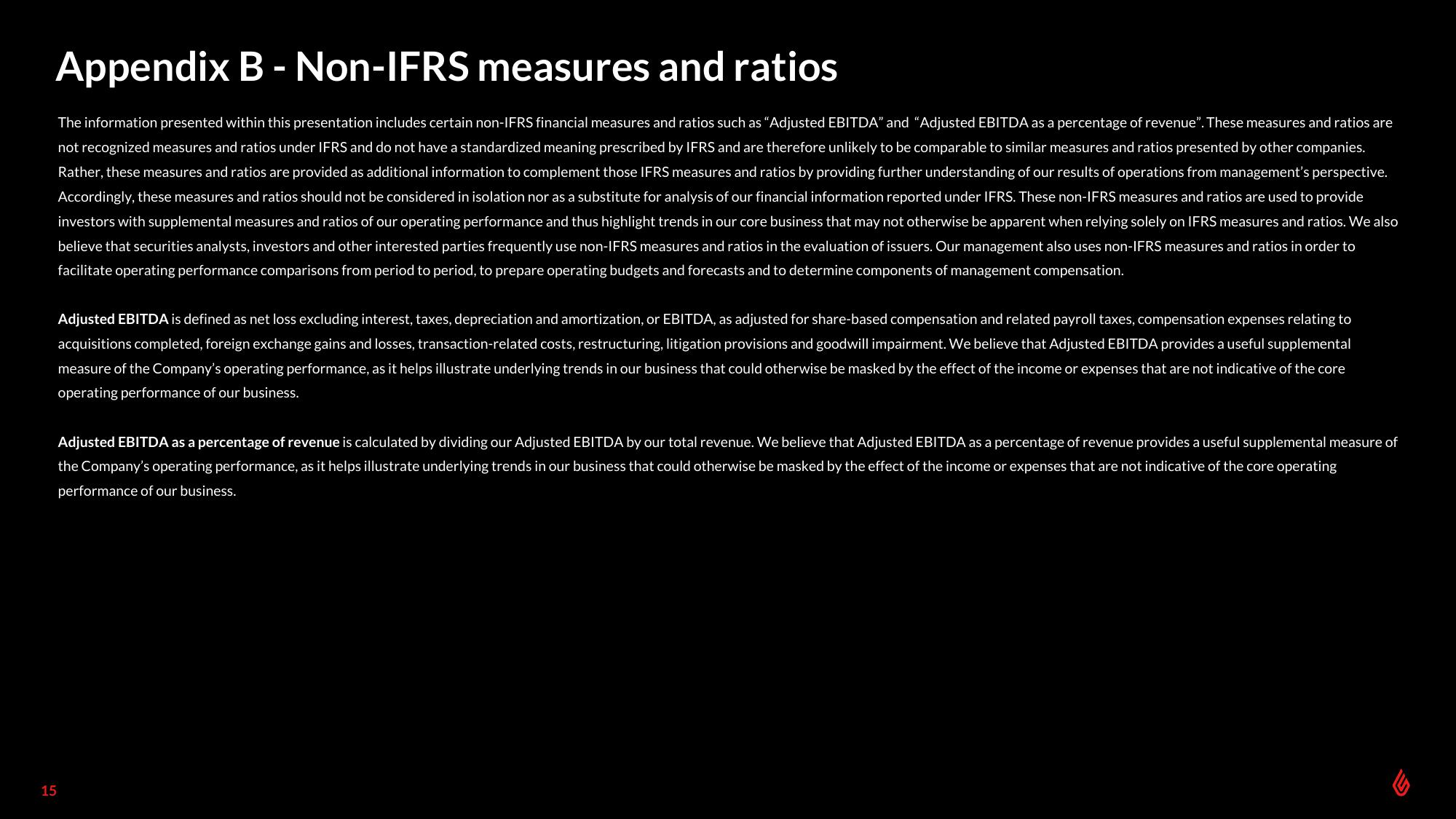Lightspeed Results Presentation Deck
Appendix B - Non-IFRS measures and ratios
The information presented within this presentation includes certain non-IFRS financial measures and ratios such as "Adjusted EBITDA" and "Adjusted EBITDA as a percentage of revenue". These measures and ratios are
not recognized measures and ratios under IFRS and do not have a standardized meaning prescribed by IFRS and are therefore unlikely to be comparable to similar measures and ratios presented by other companies.
Rather, these measures and ratios are provided as additional information to complement those IFRS measures and ratios by providing further understanding of our results of operations from management's perspective.
Accordingly, these measures and ratios should not be considered in isolation nor as a substitute for analysis of our financial information reported under IFRS. These non-IFRS measures and ratios are used to provide
investors with supplemental measures and ratios of our operating performance and thus highlight trends in our core business that may not otherwise be apparent when relying solely on IFRS measures and ratios. We also
believe that securities analysts, investors and other interested parties frequently use non-IFRS measures and ratios in the evaluation of issuers. Our management also uses non-IFRS measures and ratios in order to
facilitate operating performance comparisons from period to period, to prepare operating budgets and forecasts and to determine components of management compensation.
Adjusted EBITDA is defined as net loss excluding interest, taxes, depreciation and amortization, or EBITDA, as adjusted for share-based compensation and related payroll taxes, compensation expenses relating to
acquisitions completed, foreign exchange gains and losses, transaction-related costs, restructuring, litigation provisions and goodwill impairment. We believe that Adjusted EBITDA provides a useful supplemental
measure of the Company's operating performance, as it helps illustrate underlying trends in our business that could otherwise be masked by the effect of the income or expenses that are not indicative of the core
operating performance of our business.
Adjusted EBITDA as a percentage of revenue is calculated by dividing our Adjusted EBITDA by our total revenue. We believe that Adjusted EBITDA as a percentage of revenue provides a useful supplemental measure of
the Company's operating performance, as it helps illustrate underlying trends in our business that could otherwise be masked by the effect of the income or expenses that are not indicative of the core operating
performance of our business.
15View entire presentation